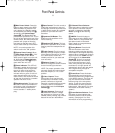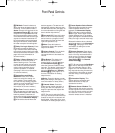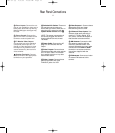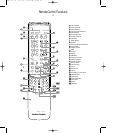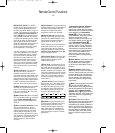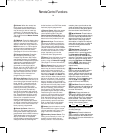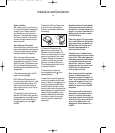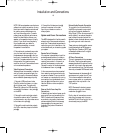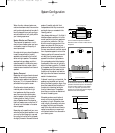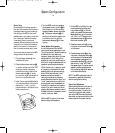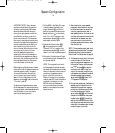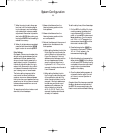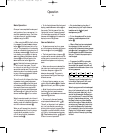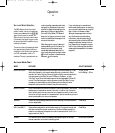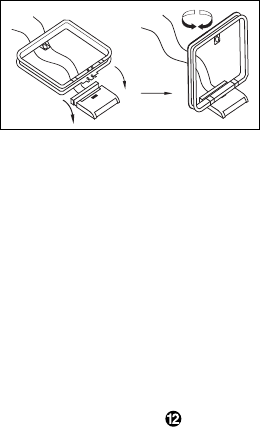
Installation and Connections
System Installation
After unpacking the unit, and placing it
on a solid surface capable of supporting
its weight, you will need to make the
connections to your audio and video
equipment. These steps need to be done
only when the receiver is first installed,
or when a change is made to the input
source equipment.
Audio Equipment Connections
We recommend that you use high-quality
interconnect cables when making connec-
tions to source equipment and recorders
to preserve the quality of the signals.
When making connections to audio
source equipment or speakers it is always
a good practice to unplug the unit from
the AC wall outlet. This prevents any pos-
sibility of accidentally sending audio or
transient signals to the speakers that may
damage them.
1. Connect the analog output of a CD
player to the CD inputs §.
NOTE: When the CD player has both
fixed and variable audio outputs it is best
to use the fixed output unless you find
that the input to the receiver is so low
that the sound is noisy, or high that the
signal is distorted.
2. Connect the Play/Out jacks of a cas-
sette deck, MD or other audio recorder to
the Tape Monitor In jacks •. Connect
the Record/In jacks on the recorder to
the Tape Monitor Out jacks ¶ on
the AVR5.
3. Assemble the AM Loop Antenna sup-
plied with the unit as shown below.
Connect it to the
AM and GND screw
terminals ·.
4. Connect an FM antenna to the
FM (75 ohm) connection a. The
FM antenna may be an external roof
antenna, an inside powered or wire lead
antenna or a connection from a cable
TV system. Note that if the antenna or
connection uses 300-ohm twin-lead
cable, you must use the 300-ohm-to-
75-ohm adapter supplied with the unit
to make the connection.
5. Connect the front, center and
surround speaker outputs to the
respective speakers.
To assure that all the audio signals are
carried to your speakers without loss of
clarity or resolution, we suggest that you
use high-quality speaker cable. Many
brands of cable are available, and the
choice of cable may be influenced by the
distance between your speakers and this
receiver, the type of speakers you use,
personal preferences and other factors.
Your dealer or installer is a valuable
resource to consult in selecting the
proper cable.
Regardless of the brand of cable selected,
we recommend that you use a cable con-
structed of fine, multistrand copper with a
gauge of 14 or smaller. Remember that in
specifying cable, the lower the number,
the thicker the cable.
Cable with a gauge of 16 may be used for
short runs of less than ten feet. We do not
recommend that you use cables with an
AWG equivalent of 18 or higher due to
the power loss and degradation in
performance that will occur.
Cables that are run inside walls should
have the appropriate markings to indicate
listing with UL, CSA or other appropriate
testing agency standards. Questions about
running cables inside walls should be
referred to your installer or a licensed
electrical contractor who is familiar with
the NEC and/or the applicable local
building codes in your area.
When connecting wires to the speakers,
be certain to observe proper polarity.
Remember to connect the “negative” or
“black” wire to the same terminal on the
receiver and the speaker. Similarly, the
“positive” or “red” wire should be con-
nected to the like terminal on the AVR5
and speaker.
We also recommend that the length of
cable used to connect speaker pairs be
identical. For example, use the same
length piece of cable to connect the front
left and front right or surround left and
surround right speakers, even if the
speakers are a different distance from
the AVR5.
15
AVR5 om (e) 2/5/99 10:38 AM Page 15




